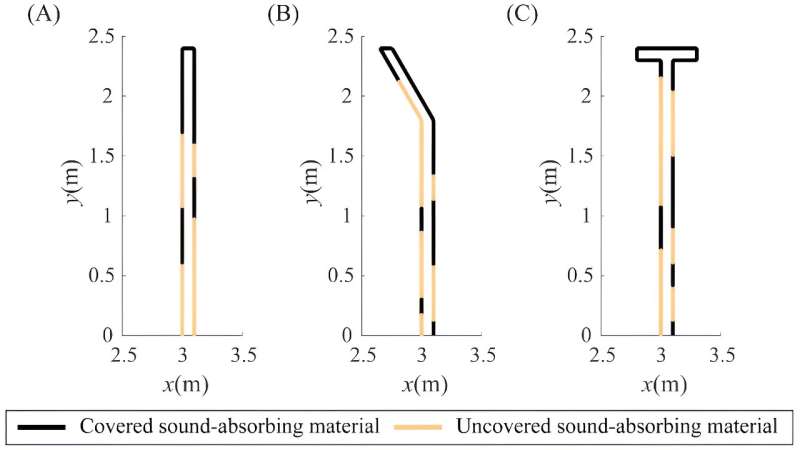
In a bid to combat escalating traffic noise pollution, a novel study presents a semianalytical meshless method to optimize the acoustic performance of sound barriers. The research focuses on enhancing the effectiveness of these barriers by refining their shape and material distribution.
Using the Burton–Miller-type singular boundary method (BM-SBM) and a solid isotropic material with penalization (SIMP), this approach offers a cost-effective and precise alternative to traditional experimental methods. The findings demonstrate significant improvements in noise attenuation, providing valuable insights for future sound barrier designs and contributing to urban noise management.
Traffic noise pollution is a major environmental issue, worsened by the increasing number of vehicles. Long-term exposure to high noise levels can cause health problems like insomnia, hypertension, and cardiovascular diseases.
Traditional methods for evaluating and optimizing sound barriers are often costly and time-consuming. Advances in computational techniques have introduced more efficient simulation-based approaches. Due to these challenges, it is essential to conduct in-depth research to improve the design and effectiveness of sound barriers in reducing traffic noise.
Researchers from Qingdao University and the University of Siegen have published a study in the International Journal of Mechanical System Dynamics in 2023, introducing a semianalytical meshless method to optimize sound barriers. This innovative approach refines acoustic performance by analyzing barrier shapes and sound-absorbing material distribution, offering a more efficient solution to urban noise pollution.
The research introduces a semianalytical meshless method to evaluate and optimize the performance of sound barriers. By analyzing various shapes, such as vertical, Half-Y, and T-shaped barriers, the study assesses their acoustic performance using the Burton–Miller-type singular boundary method (BM-SBM). This method simplifies the acoustical impedance boundary condition and employs the method of moving asymptotes (MMA) for optimizing material distribution.
Numerical examples demonstrate that the T-shaped sound barrier outperforms others in noise reduction, particularly when combined with optimally distributed sound-absorbing materials. The optimization process involves a solid isotropic material with penalization (SIMP) technique, ensuring efficient material usage.
Results indicate that the optimized distribution of sound-absorbing materials significantly enhances noise attenuation compared to full coverage. The study also validates the accuracy of BM-SBM by comparing it with the finite element method (FEM), showing excellent agreement in results.
Prof. Fajie Wang from Qingdao University, a leading expert in computational mechanics, remarked, "Our computational optimization of sound barriers is a major step forward in mitigating noise pollution. It allows for more effective noise control with minimal material, with broad applications in industries where noise management is essential."
The findings from this study have broad implications for urban planning and public health. By optimizing the design and material distribution of sound barriers, cities can more effectively manage traffic noise, improving the quality of life for residents.
This research also offers potential applications in other noisy environments, such as industrial zones and construction sites. Furthermore, the semianalytical meshless method provides a scalable solution that can be adapted to different scenarios, paving the way for innovative noise control strategies in various sectors.
More information: Hanqing Liu et al, Performance analysis and material distribution optimization for sound barriers using a semianalytical meshless method, International Journal of Mechanical System Dynamics (2023). DOI: 10.1002/msd2.12087
Provided by Maximum Academic Press
Citation: Noise no more: Transforming sound barriers with material optimization (2024, July 8) retrieved 8 July 2024 from https://techxplore.com/news/2024-07-noise-barriers-material-optimization.html
This document is subject to copyright. Apart from any fair dealing for the purpose of private study or research, no part may be reproduced without the written permission. The content is provided for information purposes only.
